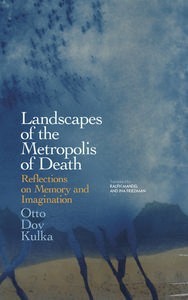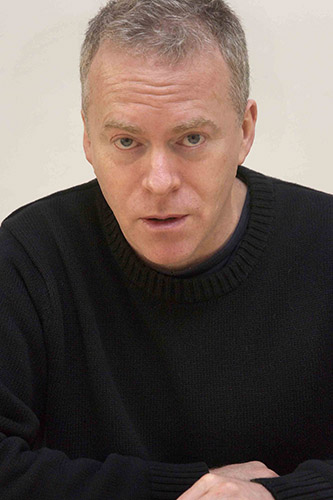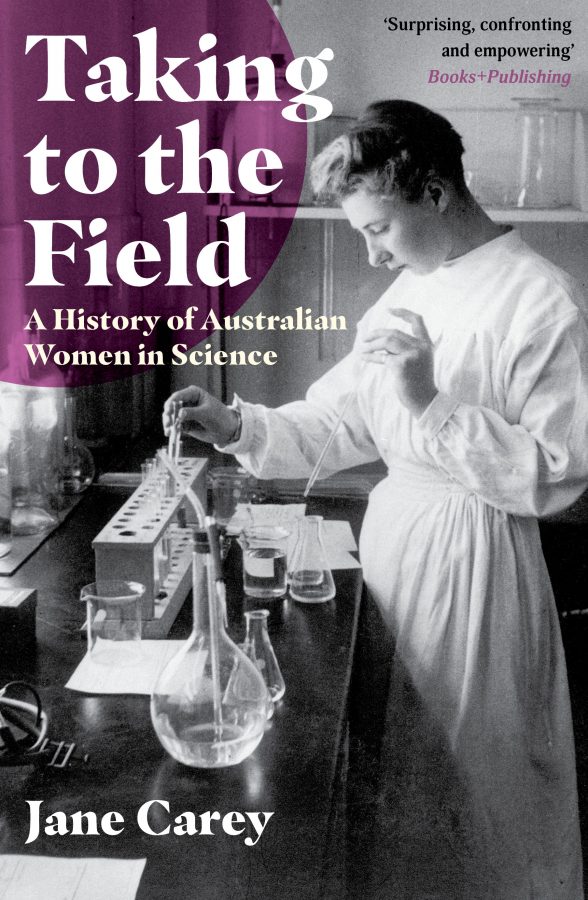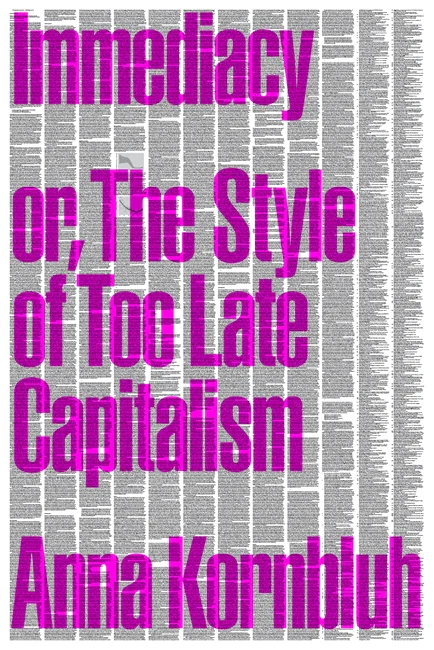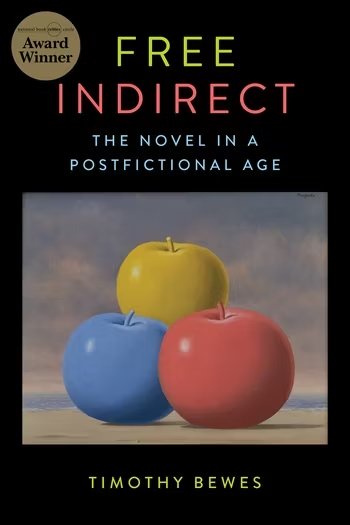‘The Holocaust,’ according to Susan Gubar, ‘is dying.’ The individuals who survived it are passing away, and ‘their painful yet requisite testimonies are drawing to a close.’ While this fact alone will profoundly effect the ways in which discourse about the Shoah circulates and renews itself, it does not exhaust the meaning packed into Gubar’s enigmatic, and no doubt controversial, claim. The Holocaust is also dying, and in fact always has been dying, she argues, because post-war sensibilities and ideologies have hindered our ability to confront it. An initial silence about its horrors, especially in the Europe of the 1950s, obstructed its passage into public memory. After that, the consolidation of a ‘Holocaust canon’ in the 1970s and the subsequent integration of Holocaust narratives into a broader media environment (organised around commercial film, television, and middlebrow fiction) seems to have bifurcated representations of the Shoah into apparently opposed poles of cultural practice and value. On the one hand, an insistence on sanctity, singularity and even unrepresentability – embodied in Theodor Adorno’s famous dictum that ‘To write poetry after Auschwitz is barbaric’ – placed a series of restrictions on how, and by whom, the Holocaust could be evoked. On the other hand, the culture industry’s commodification of history reduced the experience of genocide to a series of textual and visual clichés that, as Alvin Rosenfeld puts it, rendered it overly familiar and thus undermined its gravity.
Otto Dov Kulka’s Landscapes of the Metropolis Death is an anomalous text in regard to both sides of this opposition. We could describe it as a memoir, given that Kulka’s own boyhood experiences in Auschwitz are at its centre. But the term memoir barely seems adequate to the introspective, often poetic, sometimes hallucinatory moments that it captures. The book is little more than a hundred pages long, it has almost no interest in the construction of a sequential narrative, and for the most part it avoids direct encounters with what Kulka identifies as the stock material of survivor memoirs and testimonies: ‘I mean the violence, the cruelty, the torture, the individual killings, which, as far as I can work out – though I generally avoid reading such texts – are portrayed as the everyday routine of that world of the camps.’ In sharp contrast to what we might expect from a first-hand account of Auschwitz, Kulka in fact claims not to remember much of this at all. ‘What’s puzzling,’ he writes, ‘is that I possess almost no such memories; I have to think hard and scan the images that remain engraved in one form or another – as experiences, as colours, as impressions – in order to isolate in them something of a type that I could describe as violence.’
This passage suggests what makes Landscapes of the Metropolis of Death such an important contribution to the literature on the Holocaust. As the subtitle ‘reflections on memory and imagination’ indicates, it is as much a meditation on the processes of recollection and invention as it is an act of recall or memorialisation. What Kulka is able to remember of everyday life in Auschwitz unsettles presuppositions about the camp and its lasting psychological effects so thoroughly that even a reader steeped in the Holocaust canon is likely to experience a sense of defamiliarisation. This reflects the distance between Kulka’s mode of recollection and the sort of images that have become part of our public memory. Recalling an encounter with another survivor memoir (Kulka doesn’t tell us which), he writes: ‘To my appalled astonishment, all I felt, all I read and saw in that evocation, in those descriptions, was utter alienation.’ Kulka finds no place for his own recollections in the prevailing forms of public memory – the ‘many works of cinema, theatre and art’ – that convey the experience of Auschwitz to what he imagines as ‘the whole reading public’ if not the ‘whole world’. The rigour of Kulka’s undertaking consists in his commitment to this sense of alienation; his refusal to integrate private memory into public memory, his distance from representational paradigms that, for Gubar, continue to frame and sometimes obscure the actuality of these events.
Kulka was ten in September 1943 when he was shipped from Theresienstadt to the so-called ‘family camp’ at Auschwitz II-Birkenau, along with 5000 other inhabitants of the Czech ghetto. As an appendix to the book explains, the situation in which he found himself was unusual in regard to the rest of the Auschwitz-Birkenau complex. The Reich Security Main Office had created the family camp as part of a potential propaganda exercise designed to counter reports about the extermination of Jews deported to the East. Kulka’s own research on letter exchanges between Adolf Eichmann’s office and the German Red Cross enables him to reconstruct the bureaucratic processes informing his survival and the deaths of virtually everyone else around him. In December 1943, another 5000 inmates from Theresienstadt arrived. In March 1944, virtually all of first 5000 were murdered.
Kulka survived because he and his mother were in the camp hospital at the time. In June 1944, a delegation from the Red Cross visited Theresienstadt and appeared satisfied with what it found there. The family camp at Auschwitz thus became redundant. Three weeks later, in early July 1944, it was liquidated. Its inmates were either sent to labour camps in Germany or to the gas chambers. Kulka was selected for the gas chambers, but survived again when he was subsequently put into a work detail composed of other boys around his age. In January 1945, he and his father, who also survived, left Auschwitz on one of the infamous death marches into Germany. Kulka’s mother had already been sent to Stutthof on the Baltic Sea, where she would die of an unspecified illness. Kulka recalls walking through the night, noticing large black stains on the side other road. When he looks closely he can see that they are human bodies.
A few years after the war, Kulka emigrated to Israel. By the mid-1960s he was a historian based at the Hebrew University of Jerusalem and specialising in the history of the Holocaust, although his scholarship avoided having to confront the actual moment of extermination, ‘the violent end, the murder, the humiliation and the torture of those human beings.’ As Kulka puts it, he ‘left, or skirted that dimension’ the same way he once skirted piles of corpses. At the same time, his strict orientation to historical objectivity insisted he maintain a distinction between his research and his autobiography. Among the many expressive modes available to him – personal testimony, memoir, fiction – he chose impersonal historical research and silence. In 1991, however, he began making tape recordings in which he would describe the images and impressions associated with his own experiences, and with what had developed into a ‘private mythology’ of Auschwitz centred around the appropriately mythic conception of the metropolis of death.
Landscapes of the Metropolis of Death is the record of this private mythology. In a way that seems faithful to its tape-recorded origins, it is composed of fragments: the shards of memory and the shards of fantasy that embody what has survived of Kulka’s childhood experience. These fragments are interspersed with photographs, personal and archival, and reproductions of pieces of children’s art from Theresienstadt. They also include three poems, written in the camp by a young woman who passed them to a Kapo as she was ushered to her death. In a way that will remind readers of W.G. Sebald, who is clearly an influence on Kulka’s thinking about memory and the imagination, these fragments have a sort of materiality about them defies explanation or categorisation. They persist like the physical ruins of the camp that Kulka confronts when he visits Auschwitz in 1978.
This is, in fact, the opening moment of the book. In Poland to participate in an academic conference, Kulka decides to go to the camp as a tourist: not Auschwitz I, ‘which is a kind of museum’ one of his colleagues tells him, but Birkenau, ‘the real Auschwitz’. Returning to the scene of his own survival, compelled to confront the moment of the death he somehow avoided, he finds an eerily melancholy landscape, a ‘graveyard landscape’ of overwhelming silence stretching from ‘horizon to horizon’: rows of chimneys, sagging pillars, rusted barbed wire creeping through damp grass. ‘There was a muteness there, and emptiness there,’ he writes: ‘There was astonishment that these landscapes – which had been so densely crowded with people, like ants, with armies of slaves, with rows of people making their way along the paths – were silent.’
What inserts itself here is a sense of mutability, of ruin. It is a telling moment, and one that is informed by a completely different recollection that we encounter much later in the book. Visiting Jerusalem’s Temple Mount in the late 1960s, Kulka has a moment of déjà vu that he traces to ‘the consciousness of such a highly charged meaning now apparelled as a ruin’. It is the sight of barbed wire that enables him to make the connection to Auschwitz, and forces him to recall a trip he made to the camp in 1946, one that ‘had apparently sunk completely into my memory’. The Temple Mount, he writes, was a place ‘charged like no other with the unfolding of a historical trauma, with death and end-time, with everything that came out of it or flowed into it, and walking across it was to make one’s way through the mute ruins, through grass growing wild, amid the rusting barbed wire that links this place to that. Had it not been for that barbed wire, there might never have arisen that stunning and unmistakable feeling: in this place I have been before!’
The shards of memory that constitute this book are the mental revenants of this ruined landscape. They are charged with conflicted, sometimes allegorical meanings that register an overwhelming, sometimes suffocating, sense of fatality, but they also embody life in defiance of its imminent annihilation. Kulka’s fidelity to his private mythology, his refusal to let the categories of history or the burden of objectivity intrude into memories that are also formed by the processes of the imagination, often give these revenants the force of an interruption: the appearance of something that we struggle to reconcile with a prevailing view of the camp, or the uncanny sense of memory obeying its own inexplicable logic. Against the backdrop of the metropolis of death, also referred to as the ‘Great Death’ or the ‘immutable law’, we find moments of irony, subversion, beauty and play.
Some of these moments emerge because of the particular circumstances in which Kulka found himself. In the family camp, for instance, cultural and communal life persisted in a way that is largely absent from the Auschwitz writings of survivors like Primo Levi and Jean Améry. Améry, in fact, has written powerfully about how the experience of Auschwitz shattered his sense of himself as the bearer of a specific cultural tradition: ‘In Auschwitz … the isolated individual had to relinquish all of German culture, including Dürer and Reger, Gryphius and Trakl, to even the lowest SS man.’ Kulka, by contrast, recalls staging a black comedy about a heavenly Auschwitz and participating in a children’s choir performance of ‘Ode to Joy’. He can also talk about Auschwitz as the scene of his formative encounters with the ‘humanistic heritage of European culture’, and remembers conversations about Dostoevsky, Beethoven, Goethe and Shakespeare. The cognitive dissonance these moments generate has more to do with our preconceptions than with Kulka’s prose, which displays a Kafkaesque acceptance of the incongruous.
Améry’s sense of cultural disenfranchisement also determines the sort of imaginative framework he can bring to bear on the experience of Auschwitz. In the camp, for instance, the intellectual or metaphysical relationship to mortality that he had inherited from German romanticism became impossible for him: ‘For death in its literary, philosophic, or musical form there was no place in Auschwitz. No bridge led from death in Auschwitz to Death in Venice.’ The comment points to the impossibility of aestheticising the prospect of one’s death in a context where life itself was treated as if it had no enduring value.
Kulka, by contrast, never feels the need to bracket the imaginative dimension of his experience. At one point he even relates a dream in which Josef Mengele appears ‘frozen in time’ as a camp guide for visiting tourists. In fact, the particular way in which Landscapes of the Metropolis of Death encounters the idea, and the imagery, of death, points to the necessity of the imagination as one of the material constituents of the survivor’s experience. Kulka’s mythic landscape, which is sometimes quite clearly a dreamscape, organised around the ‘Great Death’, enables him to evoke the horror of his experience as he gazes at the crematoria – ‘the primal experience of looming horror and of being sucked into it, swallowed within it’ – but it also provides the backdrop for a mental universe of escape, survival, and return. On the one hand, the phrase the ‘Great Death’ is startlingly literal. On the other hand, it generates a set of imaginative possibilities and identifications in which Kulka compulsively plays out, almost as a form of daydreaming, his proximity to the collective death that he nevertheless managed to survive. The murder of the family camp’s first 5000 inmates, for instance, comes back to him ‘in images which I did not see with my own eyes but which I continually re-experience.’ Kulka can imagine
how they enter the gas chambers and I with them, because I belong to them. How they and I enter the corridor and afterwards the gas chambers and I with them. And how I at the last minute, by some roundabout way, escape.
This aspect of his private mythology enables Kulka to think of his death not as a story that plays out once, but as an endlessly iterated cycle, a fantasy, a dreamscape, in which a lived experience, a historical reality, is worked through the prism of an imagination defined by the accident of its survival.
The ‘Great Death’, however, is also the backdrop against which moments that seem utterly improbable intrude into Kulka’s memory: silver airplanes in an immense blue sky, for instance. He recalls it is an image of boundless, almost transcendental beauty that is as indelible as the crematoria and smoke-belching chimneys.
There is almost no return to that Metropolis, with its sombre colours, with the sense of the immutable law that encloses all its beings within confines of allotted time and of death; that is, there is almost no sense of a return to that world without a sense of return to those wonderful colours, to that tranquil, magical and beckoning experience of those blue skies of the summer of 1944 in Auschwitz-Birkenau … This return, even if it is divorced from that sombre return from which there is no way out, is itself a return which has no way out. The colour is the colour of childhood, a colour of innocence, a colour of beauty. And this too is an immutable law from which there is no escape.
This sort of juxtaposition, as unexpected as it is affecting, is typical of the way Kulka works. If there is a logic here, it might well be the logic of poetry. The juxtaposition of apparently irreconcilable images, the irruption of memories or dreams that cannot easily be integrated into a prevailing narrative or thematic logic, the elegiac sensibility that lingers in the mental and material ruins of Auschwitz along with the memories of the murdered – all of these seem more typical of poetry than of memoir, testimony or other forms of narrative.
‘Death,’ wrote Walter Benjamin, ‘is the sanction of everything the storyteller can tell. He has borrowed his authority from death.’ If ever there were a book that literalised this idea, it is this one. Kulka’s unflinching commitment to a sort of mental archeology takes us inside the experience of surviving in a liminal state between life and death. Like Prometheus bound, Kulka writes, he has never been able to free himself from the crematoria of Auschwitz: ‘the place where I seemingly lived and remained always … held captive there as a life prisoner, bound and fettered with chains that cannot be undone.’ Landscapes of the Metropolis of Death belongs alongside the work of Levi, Améry, Imre Kertész and others who have attempted to capture what Lawrence Langer sees as a ‘neglected legacy of the Holocaust experience’: the ‘deathlife’ of the survivor. And yet it is a book of episodes, impressions, images and dreams, not of stories in any conventional sense. Like the physical ruins of Auschwitz, these fragments are, quite simply, what remain: the private landscape that shadows the public landscape, and forces us to see it again.
References
Theodor Adorno, Prisms, translated by Samuel and Shierry Weber (Cambridge, Mass.: MIT Press, 1981).
Jean Améry, At the Mind’s Limits: Contemplations by a Survivor on Auschwitz and its Realities, translated by Sidney and Stella P. Rosenfeld (London: Granta Books, 1999).
Walter Benjamin, Illuminations, translated by Harry Zohn (New York: Schocken Books, 1968).
Heinz Brüggemann, ‘Einleitung zu Otto Dov Kulka: Landschaften der Metropole des Todes,’ edited by Brüggemann and Günter Oesterle, Walter Benjamin und die Romantische Moderne (Würzburg: Königshausen and Neumann, 2009) 551-560.
Susan Gubar, Poetry After Auschwitz: Remembering What One Never Knew (Bloomington: Indiana University Press, 2006).
Lawrence Langer, Using and Abusing the Holocaust (Bloomington: Indiana University Press, 2006).
Alvin Rosenfeld, The End of the Holocaust (Bloomington: Indiana University Press, 2011).
